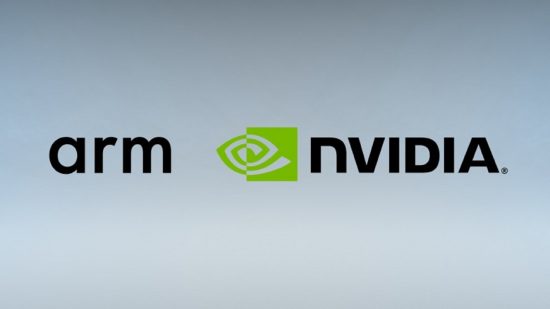Nvidia has just sealed the biggest deal in semi-conductor history by paying $40 billion US (around £31.2 billion) for Arm. The good news is that Nvidia plans to keep Arm’s headquarters and IP registered in the UK and is even going to further investment with an AI research and education centre, as well as building an Arm/Nvidia-based AI supercomputer for research.
However, there’s notably no commitment to keeping or growing UK jobs, as Softbank made when it bought Arm back in 2016.
Nvidia is looking to bolster Arm’s CPU tech with its own GPU and AI technologies, which is good because Arm’s Mali GPU tech isn’t exactly held in high regard, and its Ethos NPU series hasn’t seen much success.
Nvidia also spends over 6x more on R&D in a year than Arm, so this gives Arm a huge shot in the, erm, leg. By owning Arm instead of just licensing from it, Nvidia can take a long-term architectural direction that ties GPU, AI chip and CPU platform together innately, in addition to millions of new software developers.
Nvidia has been trying to get hold of CPU IP for nearly two decades. In the early-2000s, when Nvidia began making its own motherboard chipsets, it was in discussion to buy VIA and its x86 CPUs.
However, VIA was facing legal trouble from Intel over x86 licensing, so instead Nvidia acquired Stexar in 2006, which made a CPU that converted x86 and later Arm instructions to its own very long instruction word (VLIW) instruction set.
Nvidia launched Denver and Denver 2 using this technology, but ultimately it was unsuccessful and Nvidia instead used 64-bit Arm CPU cores in its following Tegra chips. With its recent purchase of Mellanox networking, I’ve no doubt Nvidia will fully focus on the high-end product roadmap with great ambition in the Enterprise market. However, there are exciting opportunities for PCs here too – we could see a new range of derivative CPUs for Windows laptops and PCs, especially for gaming and workstations.
Nvidia states it will retain Arm’s open licensing model, but notably Arm will operate as an Nvidia division, and not an independent subsidiary. This means Arm will be subject to more direct oversight than before, which will no doubt worry some key Arm partners.
Companies such as Samsung and Qualcomm have been subject to Nvidia legal action over patents before, and Nvidia has also supplied companies such as Apple, Microsoft and Sony with GPUs for their respective products.
Keeping partners happy should be of paramount importance to Nvidia, though. The company is now worth 50 per cent more than Intel and it answers to shareholders, so this massive purchase needs to pay off.
However, Nvidia’s partner relations have been typically defined as a strong-willed, brand-first approach, which is the antithesis of Arm’s traditionally open-eared, hands-off working methods. And let’s not understate this, the repercussions of this purchase will be immense, as the Arm ecosystem extends to every nook and cranny of the semiconductor ecosystem.
The ripples will reach much further than when AMD bought ATI in 2006. You may not realise this, but there’s Arm IP throughout your PC. If you own an AMD Zen-era CPU, it has Arm Trustzone IP and an embedded security processor inside. Arm IP is likely also in your motherboard chipset, Wi-Fi chip, sound chip and even your mouse and keyboard – anywhere there’s an embedded controller will likely have some form of Arm IP inside.
Jensen has gone all-in and the next few years will be very interesting in every industry that uses Arm IP.
